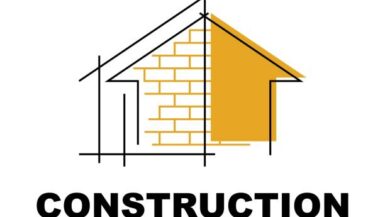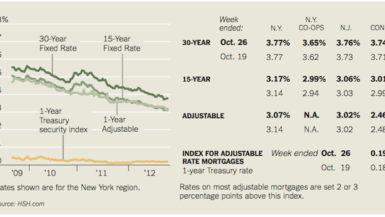Table of Contents
- Introduction
- The Importance of Construction Fencing
- Types of Construction Fences
- 3.1 Perimeter Fencing
- 3.2 Temporary Fencing
- 3.3 High-Security Fencing
- Materials Used in Construction Fencing
- 4.1 Chain Link Fences
- 4.2 Welded Wire Mesh Fences
- 4.3 Wooden Fences
- 4.4 Concrete Barriers
- Installing Construction Fences
- 5.1 Preparing the Site
- 5.2 Setting Up the Fence
- 5.3 Security Measures
- Legal Requirements and Regulations
- 6.1 Local Building Codes
- 6.2 OSHA Guidelines
- 6.3 Environmental Regulations
- Benefits of Construction Fences
- 7.1 Safety for Workers and the Public
- 7.2 Theft and Vandalism Prevention
- 7.3 Privacy and Noise Control
- Maintenance and Upkeep
- 8.1 Regular Inspections
- 8.2 Repairs and Replacements
- 8.3 Cleaning and Painting
- Sustainable Fencing Options
- 9.1 Recycled Materials
- 9.2 Biodegradable Fences
- 9.3 Solar-Powered Fencing
- Innovations in Construction Fencing
- 10.1 Smart Fencing Technology
- 10.2 Drones for Surveillance
- 10.3 Modular Fencing Solutions
- Common Challenges and Solutions
- 11.1 Weather Impact
- 11.2 Unauthorized Access
- 11.3 Wildlife Interference
- Choosing the Right Construction Fencing Company
- 12.1 Reputation and Experience
- 12.2 Client Reviews and Testimonials
- 12.3 Pricing and Quotes
- Conclusion
- FAQs
- 14.1 Why is construction fencing necessary?
- 14.2 Can construction fences be customized?
- 14.3 Are construction fences reusable?
- 14.4 How high should a construction fence be?
- 14.5 Is construction fencing eco-friendly?
Introduction
Construction sites are busy and dynamic environments where various activities take place, ranging from excavation and building to heavy machinery operations. While these projects are essential for progress, they also pose inherent risks to workers, bystanders, and the surrounding property. To address safety concerns and ensure security, construction fencing plays a pivotal role in safeguarding these sites. In this article, we will explore the significance of construction fencing, the different types available, the materials used, installation procedures, legal considerations, benefits, and much more.
The Importance of Construction Fencing
Construction fencing serves as a protective barrier, delineating the construction site’s boundaries and limiting unauthorized access. It acts as a clear visual indicator for passersby, indicating that the area is off-limits and potentially dangerous. Moreover, construction fencing enhances safety for workers by reducing the risk of accidental falls and collisions with vehicles or equipment.
Types of Construction Fences
3.1 Perimeter Fencing
Perimeter construction fencing is the primary barrier around the entire construction site. It is sturdy and durable, serving as the first line of defense against trespassers and intruders.
3.2 Temporary Fencing
Temporary construction fencing is versatile and easy to install and uninstall, making it an ideal choice for short-term projects. It provides security without the need for permanent fixtures.
3.3 High-Security Fencing
High-security construction fencing incorporates additional security features such as anti-climb measures, security cameras, and access control systems. It is commonly used in projects with valuable assets or sensitive information.
Materials Used in Construction Fencing
4.1 Chain Link Fences
Chain link fences are a popular choice due to their affordability and effectiveness. They consist of woven steel wires that create a durable and transparent barrier.
4.2 Welded Wire Mesh Fences
Welded wire mesh fences offer increased strength and rigidity compared to chain link fences. They are suitable for high-security applications and can withstand external pressure.
4.3 Wooden Fences
Wooden construction fences provide privacy and aesthetics while serving their primary security purpose. They are often used in urban areas or projects with specific design requirements.
4.4 Concrete Barriers
Concrete barriers are heavy and robust, primarily used for perimeter protection. They are effective in preventing vehicular intrusion and serve as a visible deterrent.
Installing Construction Fences
5.1 Preparing the Site
Before installing construction fencing, the site must be cleared of debris and leveled. Any potential hazards should be addressed to ensure a safe and stable installation process.
5.2 Setting Up the Fence
During fence installation, the type of fencing material, posts, and supports are determined based on the project’s requirements and budget. Proper installation is crucial for the fence’s effectiveness and longevity.
5.3 Security Measures
To enhance security, additional measures like lockable gates, CCTV cameras, and warning signs can be incorporated into the construction fencing system.
Legal Requirements and Regulations
6.1 Local Building Codes
Construction fencing must comply with local building codes and regulations to ensure safety and avoid penalties. Authorities may conduct inspections to verify compliance.
6.2 OSHA Guidelines
The Occupational Safety and Health Administration (OSHA) has specific guidelines for construction site safety, including requirements for fencing and fall protection.
6.3 Environmental Regulations
Construction sites often have to adhere to environmental regulations to prevent soil erosion, protect wildlife, and ensure responsible waste management.
Benefits of Construction Fences
7.1 Safety for Workers and the Public
Construction fencing significantly reduces the risk of accidents and injuries to both workers and the general public, promoting a safer environment.
7.2 Theft and Vandalism Prevention
Construction sites are vulnerable to theft and vandalism. Proper fencing acts as a deterrent, protecting valuable equipment and materials.
7.3 Privacy and Noise Control
Fencing helps maintain privacy for the construction site and reduces noise pollution for nearby residents.
Maintenance and Upkeep
8.1 Regular Inspections
Routine inspections of construction fencing are necessary to identify and address any damage or wear promptly.
8.2 Repairs and Replacements
Any damaged sections of the fence should be repaired or replaced immediately to maintain security.
8.3 Cleaning and Painting
Regular cleaning and repainting enhance the appearance and longevity of construction fences.
Sustainable Fencing Options
9.1 Recycled Materials
Using recycled materials in construction fencing reduces the environmental impact and supports sustainability.
9.2 Biodegradable Fences
Biodegradable fencing options are an eco-friendly choice that minimizes waste generation.
9.3 Solar-Powered Fencing
Solar-powered construction fences offer a renewable energy source for security features like lighting and cameras.
Innovations in Construction Fencing
10.1 Smart Fencing Technology
Smart fencing incorporates sensors, alarms, and remote monitoring capabilities for enhanced security and real-time notifications.
10.2 Drones for Surveillance
Drones equipped with cameras can provide aerial surveillance of construction sites, improving overall security.
10.3 Modular Fencing Solutions
Modular fencing systems allow for easy customization and adaptability to various construction site layouts.
Common Challenges and Solutions
11.1 Weather Impact
Weather events can damage construction fences. Regular inspections and prompt repairs are essential to overcome this challenge.
11.2 Unauthorized Access
Implementing high-security features helps prevent unauthorized access to the construction site.
11.3 Wildlife Interference
Installing measures to prevent wildlife from entering the site ensures safety and minimizes damage to the environment.
Choosing the Right Construction Fencing Company
12.1 Reputation and Experience
Selecting a reputable and experienced construction fencing company ensures a high-quality and reliable fencing system.
12.2 Client Reviews and Testimonials
Reading client reviews and testimonials can provide valuable insights into a company’s performance and customer satisfaction.
12.3 Pricing and Quotes
Obtaining multiple quotes allows for a comprehensive comparison of pricing and services offered by different companies.
Conclusion
Construction fencing is a critical aspect of construction site management, providing safety, security, and peace of mind. By understanding the various types of construction fences, their benefits, and the legal considerations involved, construction site managers can make informed decisions to protect their projects and personnel. Embracing sustainable and innovative fencing solutions further advances the construction industry into a safer and eco-friendly future.





Leave a reply